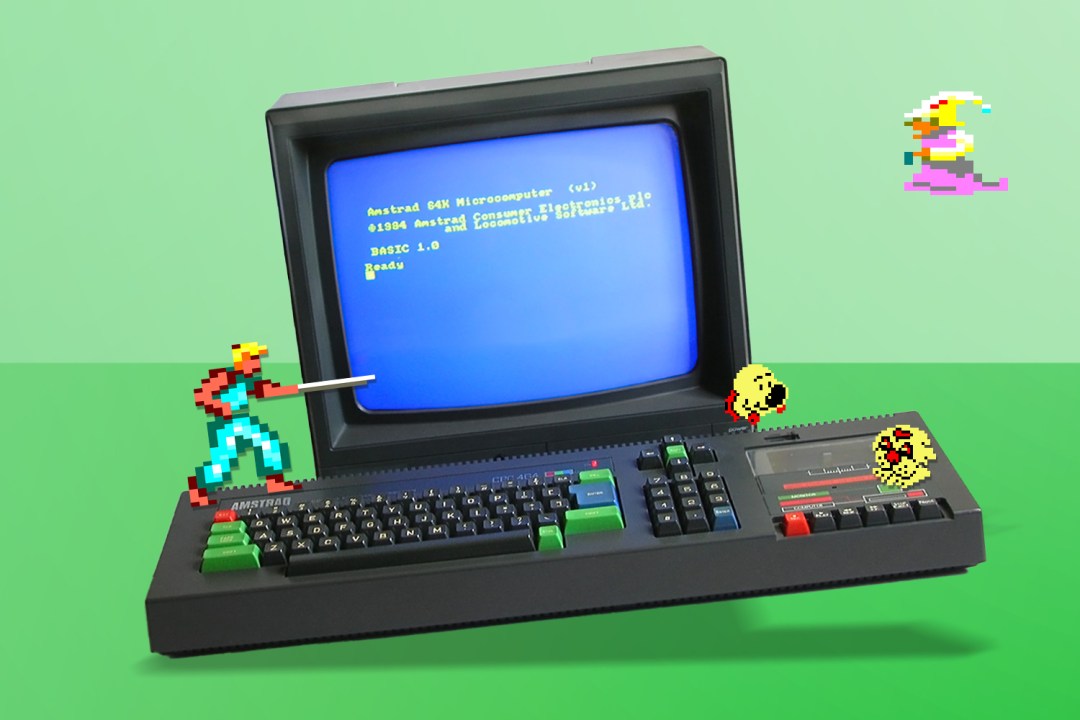The Amstrad CPC at 40 – and six of the best Amstrad CPC games
Think Sir Alan’s 8-bit micro was an also-ran? We beg to differ – the Amstrad CPC was every bit the equal of the C64 and the ZX Spectrum.

The Amstrad CPC has turned 40. If you were ‘there at the time’, we can only apologise for making you feel ancient. Or, you know, spend some time celebrating a British classic – the home micro that went head-to-head with the best of Sinclair and Commodore.
Ah, yes, the 8-bit micro no-one owned, because we all had ZX Spectrums or C64s!
Not everyone. The CPC might not lay claim to kickstarting the UK games industry like the Speccy nor being the best-selling micro of all-time like Commodore’s breadbin. But it did cement itself as a viable alternative to the ‘big two’ in the UK and Europe, and sold over two million units during its lifetime. Which was just as well, because for Alan Sugar, the CPC wasn’t about a love of tinkering or wishing he could have his very own Miner Willy. It was all about money – finding the next big market when sales of his cheap hi-fi systems started to dry up.
So Amstrad was the ‘cheap hi-fi’ of the video game world? That explains the tapes…
Well, games on tape kept prices down – and most other 8-bit machines did the same in the UK. Where Amstrad differentiated itself was in using its integration skills to fashion a sort-of all-in-one. Rather than hog the living-room telly, the CPC had its own display, to encourage deeper exploration of the machine, from serious applications to gaming. Although on the gaming side, a great many titles failed to capitalise on the CPC’s potential. Because the Amstrad used the same Z80 chip that was in the ZX Spectrum, it was plagued by lazy ports.
What a pity. That must have made an awful lot of CPC owners Spec-glum.
Indeed. It irked when playing sluggish, garish Speccy ports, knowing your machine’s multicolour mode put the C64’s browns to shame, and the CPC’s audio showed up the Speccy. Still, Alan Sugar had the last laugh, buying Sinclair after the QL failed. Yet even his business acumen couldn’t save the CPC once 16-bit fare arrived. The line’s last hurrah was the GX4000 console, whose saving grace was being marginally better than Commodore’s risible alternative. We can only imagine whoever came up with that disaster soon heard “YOU’RE FIRED!” ringing in their ears.
Six of the best: Amstrad CPC games
Thousands of Amstrad CPC games exist. People still make them today. If you want to relive your misspent youth or familiarise yourself with Sir Alan’s box of joy, start with these:
Sorcery (1985) was an early arcade effort where you scoot about solving puzzles and wiping out baddies, in a quest to rescue your wizard chums. Superior to the other 8-bit versions at the time, this one outsold them too.
Chase HQ (1989) didn’t quite match the ZX Spectrum conversion’s pace, but it added lashings of colour, and put all other home conversions to shame. Gryzor and Renegade also showcased the CPC’s arcade port chops.
Head Over Heels (1987) might lack the colour of the CPC’s other famous isometric adventure, Get Dexter, but the puzzles and character set it apart. And on the CPC, the game nudges ahead of the other 8-bit versions too.
Prince of Persia (1990) one-upped the CPC’s UK contemporaries, with an excellent official take on Jordan Mechner’s cinematic platformer. It would be years before fan efforts brought the game to the ZX Spectrum and C64.
The Guild of Thieves (1987) was one of the best text adventures for the CPC, and made excellent use of the machine’s ability to split the screen, offering chunky pictures up top and spindly 80-column text below.
Pinball Dreams (2019) is a showcase of the CPC’s lifespan extending far beyond its commercial years, and also what it can do when really pushed. It’s a superb conversion of the much-loved 16-bit ball-smacker.



